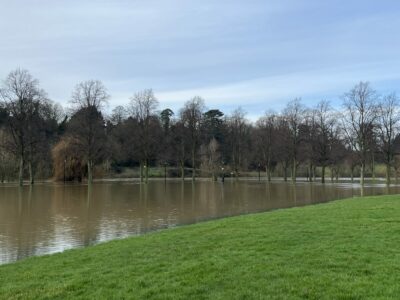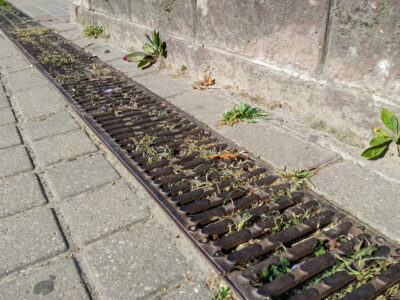Sustainable Drainage – A Tightening Regime Requiring Duty of Care
The Flood and Water Management Act of 2010 sought to enshrine Sustainable Drainage Systems (SuDS) and national standards for drainage across both new and existing property. This was replaced by the National Planning Policy Framework in 2012, which has now established consistent rules for drainage on major developments.
The National Policy states that for 10 dwellings or more, developers must ensure that SuDS are put in place, unless demonstrated to be inappropriate. Your client may view this and think that if they have to sacrifice 20 houses to accommodate SuDS, then it is inappropriate.
From the policy wording they must “demonstrate” this therefore, there must be a technical reason why SuDS cannot be installed. This can only be from analysis to prove the case.
Therefore your starting point with your client is to ensure that they effectively research the site geology and prevailing SuDS planning requirement in order to meet compliance.
The Guidance Note for Lawyers, recently published, is clear about the need to examine the local planning policy and advise the client on how they should be complied with.
These policy standards are becoming increasingly included in SuDS planning conditions by Local Authorities. Here’s an example from South Cambridgeshire District Council:
“The development hereby approved shall be carried out in accordance with the details submitted in the SuDS Management Plan (Author and Date) approved by Anglian Water, submitted with the planning application. The development shall be maintained in accordance with the Management Plan thereafter.”
(Reason: To ensure that the measures to mitigate flood risk on the site once the development has been completed are fully implemented and maintained, in accordance with policies NE/9 and NE/11 of the adopted South Cambridgeshire Local Development Framework Development Control Policies DPD and the NPPF.)
SuDS Management
The SuDS Management Plan should clearly state how a developer is going to maintain the SuDS – the cutting of grass, dredging of ditches, maintenance of any pumps, etc. – who does the work and who is going to pay for it?
The Estate Rent Charges Act 1977 makes provision for a “limited covenance for the provision of services of the benefit of land management” (see Canwell Estates v Smith Brothers Farm). A development could therefore reasonably create an Estate Rent Charge for the ongoing maintenance costs associated with the SuDS as part of the management fees or committee responsibilities, within the covenants on houses bought on site.
Again, there are important considerations in the establishment of this and the advice to your client.
Building Regulations: Follow the Drainage Hierarchy
For Minor Developments, up to 10 dwellings, Building Regulations H2 applies. A hierarchy of drainage must be followed, where a rainwater soakaway is the first priority, meaning SuDS. H2 states that this should be reasonably practical and the same technical not economic argument applies. What is the soil geology and how can my client demonstrate they have reviewed the options?
The second priority in the drainage hierarchy is to a watercourse. If chosen, this would require the landowner’s permission where the watercourse runs through – there may need to be an easement to discharge to the water course and there could be nuisance issues if the discharge increases the burden to the downstream owner.
Where this is not possible, discharging to a sewer would be limited to surface water only and not combined or fire sewers.
Meeting Duty of Care Requirements
In common law, clients must be warned of risks that are apparent to the solicitor but not to the client. Therefore if there is an impact on the viability of a site due to a potential requirement for SuDS, then the solicitor has a duty to advise the client that this is the case. The last thing you want is the client asking their architect to design a 100 site house to have 20 taken away to accommodate a SuDS requirement.
The Law Society 2015 Professional Competence Statement makes clear that the solicitor must:
“Advise on the relevant options, strategies and solutions…from “understanding commercial circumstances….” And
“… ensure advice is informed by legal and factual analysis that identifies the consequences of different actions.”
Therefore, it is essential that all available information on site drainage is provided to meet this requirement.
CON29 revisions – but not enough information
The Con29 Local Authority Search has recently been revised with a new set of drainage questions in section 3.3 “Other Matters”. These ask about the presence of SuDS, whether the property is served by them and who bills the owner for the surface water drainage charge.
Their inclusion by the Law Society is a clear recognition that guidance is tightening around the solicitor’s requirement to ask questions about SuDS. However, they do little to tell you what liabilities your client may have and only if SuDS is already there.
Understanding the site drainage conditions and options for SuDS are therefore essential for developers and landowners ahead of submitting a planning application at the pre-planning stage or to address a planning condition prior to permission being granted.
Our SuDSmart Reports can be used to support applications and verify suitable conditions for infiltration drainage on site. They can also identify which type of SuDS is suitable as part of pre-acquisition due diligence.



